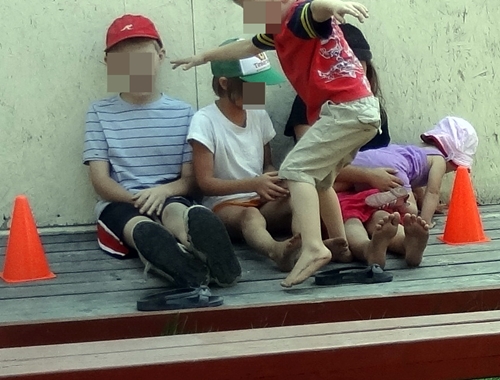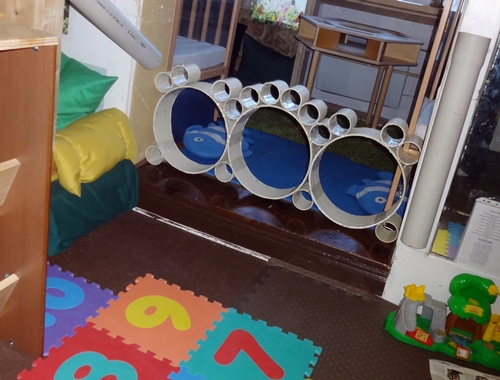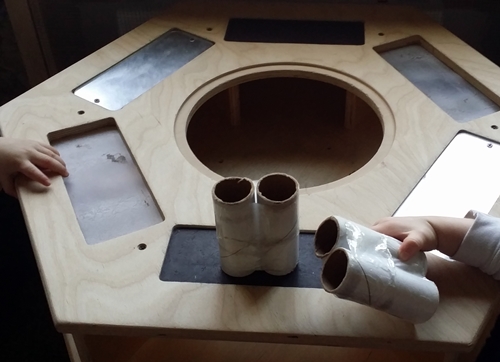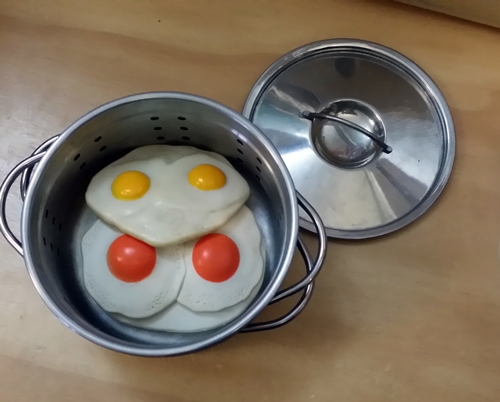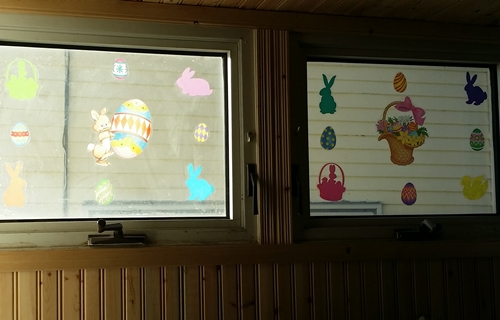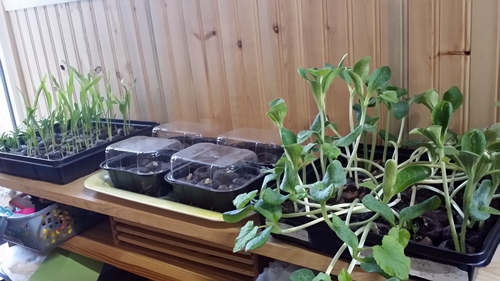I firmly believe that rough and tumble play is very beneficial but in my program I do enforce some basic guidelines. The first ‘rule’ involves location. ALL play involving chasing, wrestling, jumping etc is discouraged when we are indoors. Our main indoor play space is just 150 sq ft and when you add toys, shelving and up to eight children there is simply not enough room – the risks are greater than the reward.
That changes when we get outside. Although my yard is not a large open space I did design it for gross motor play. There are still some rules like ‘If someone is in front of you, you have to slow down/stop’. There are many obstacles and the walkways are narrow so when two or more children are trying to maneuver through the same space pushing someone out of your way is not allowed.
One of the greatest benefits of chasing games and rough and tumble play is that they require/teach awareness and self control. If you are unable to avoid colliding with another person it is not ‘an accident’. The problem is NOT that ‘they got in your way’ or ‘they were too slow’- it IS because you were not watching where you were going or you were going too fast for the conditions.
The consequence for knocking someone down isn’t yelling ‘Sorry’ over your shoulder as you continue running away. The consequence is that you need to stop, help them up and make sure they are OK before you continue playing. If that is not something you are willing to do then you are not ‘playing’ you are being mean. If you got hurt too then getting angry and blaming the others isn’t the solution – you need to be more observant, adjust your speed, or find another game to play.
Another ‘rule’ I have is that we only use imaginary weapons. Now, this is not because I’m totally against weapon play with toy weapons but I have concerns about using toys as weapons in a mixed age group setting. Yes, I have seen a group of older children involved in a wonderfully cooperative and respectful fighting game using toy weapons. I have also spent hours/weeks/months teaching toddlers that hitting hurts. The children and I have many conversations about how super heroes ‘help’ others.
Certainly most school age children can visualize an imaginary scenario, understand the difference between soft and hard objects, regulate the amount of force they use and aim appropriately but the toddlers are not developmentally equipped to do all this. The little ones watch, they see hitting and laughter but they don’t understand all the concepts involved and someone will get hurt. So, the imaginary weapons allow the older children to play their game without encouraging the little ones to hit with toys.
The third and most important ‘rule’ is that ALL the children involved in any type of rough and tumble play or fighting game must be willing participants. This includes ‘shooting’ non-players even with imaginary weapons – in fact, I usually say ‘no people as targets’. Each player must agree to their role in the game. If at any point someone says ‘STOP!’ – even if they are laughing – the activity must stop. If someone cries or gets upset then the game play stops until the problem is resolved. Stop always means stop or the game is not respectful.
If someone wants to play and agrees to the game rules the others may NOT exclude them. If someone doesn’t want to play there has to be some type of mutual time/space agreement so multiple activities don’t interfere with each other. If someone says they want to play but cannot/will not follow the group’s game rules then that person may have to find another activity.
Creating game rules is an important part of the activity and all the children who want to play must be able to participate in this process before play begins. When only one child is in charge of creating the game, assigning roles, making the rules, and determining the ‘winner’ then it is not a cooperative game. This ‘do as I say’ type of activity often enables bullying behaviour and allows the ‘leader’ to change game play in order to control outcome.
One wonderful example of a cooperative rough and tumble game was ‘Fight Club’. The group of children who created and engaged in this activity were all between five and eleven years old. They set boundaries for play area. They chose opponents or teams based on physical abilities and size. They set rules for entering and exiting the game including the option to tag in/out when you got tired. They only played this game outside when there were no little children present. This particular group engaged in this activity on/off for more than a year and never needed me to intervene. It was perfect. And it never would have happened if there were no fighting games allowed.
